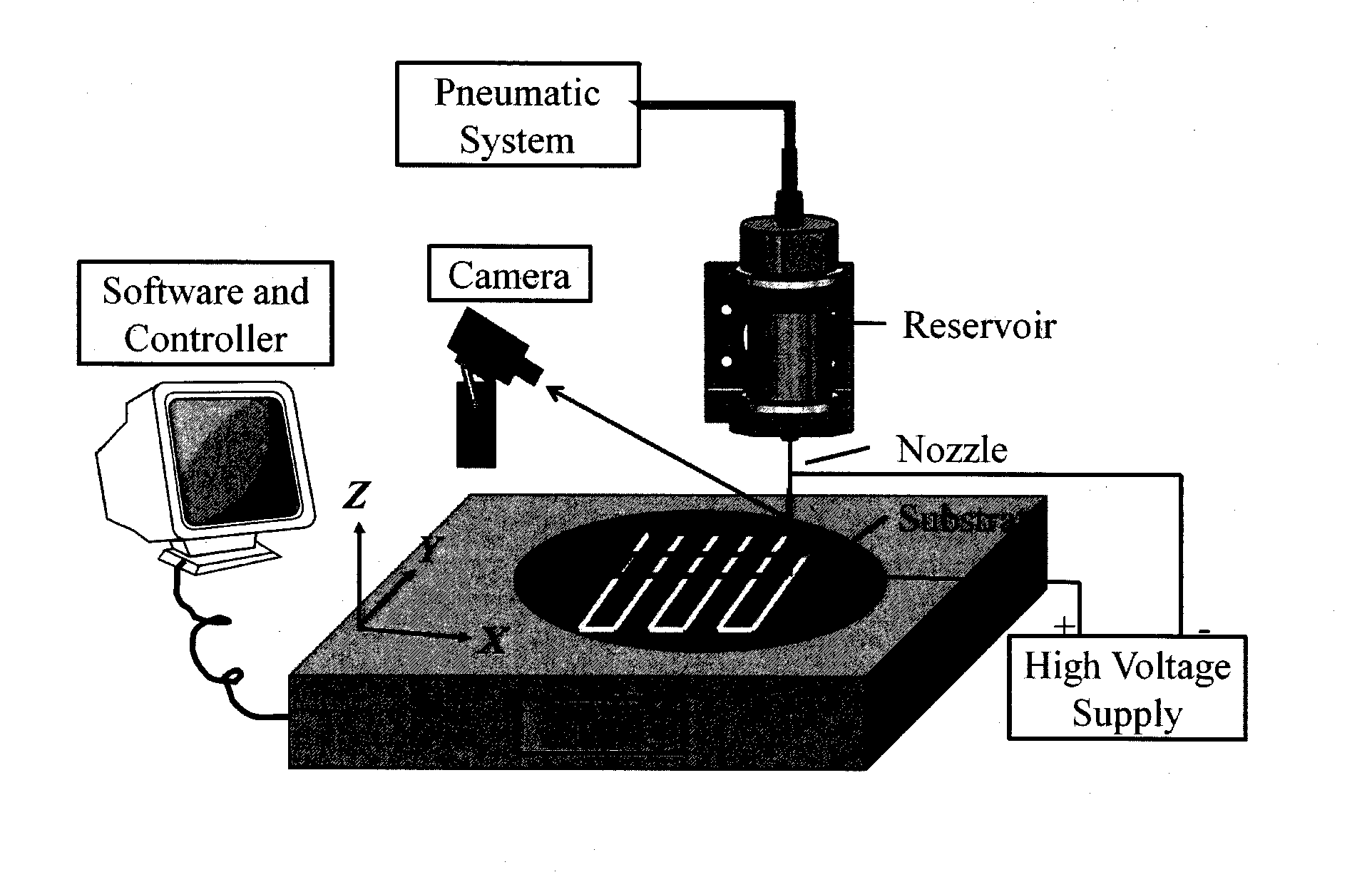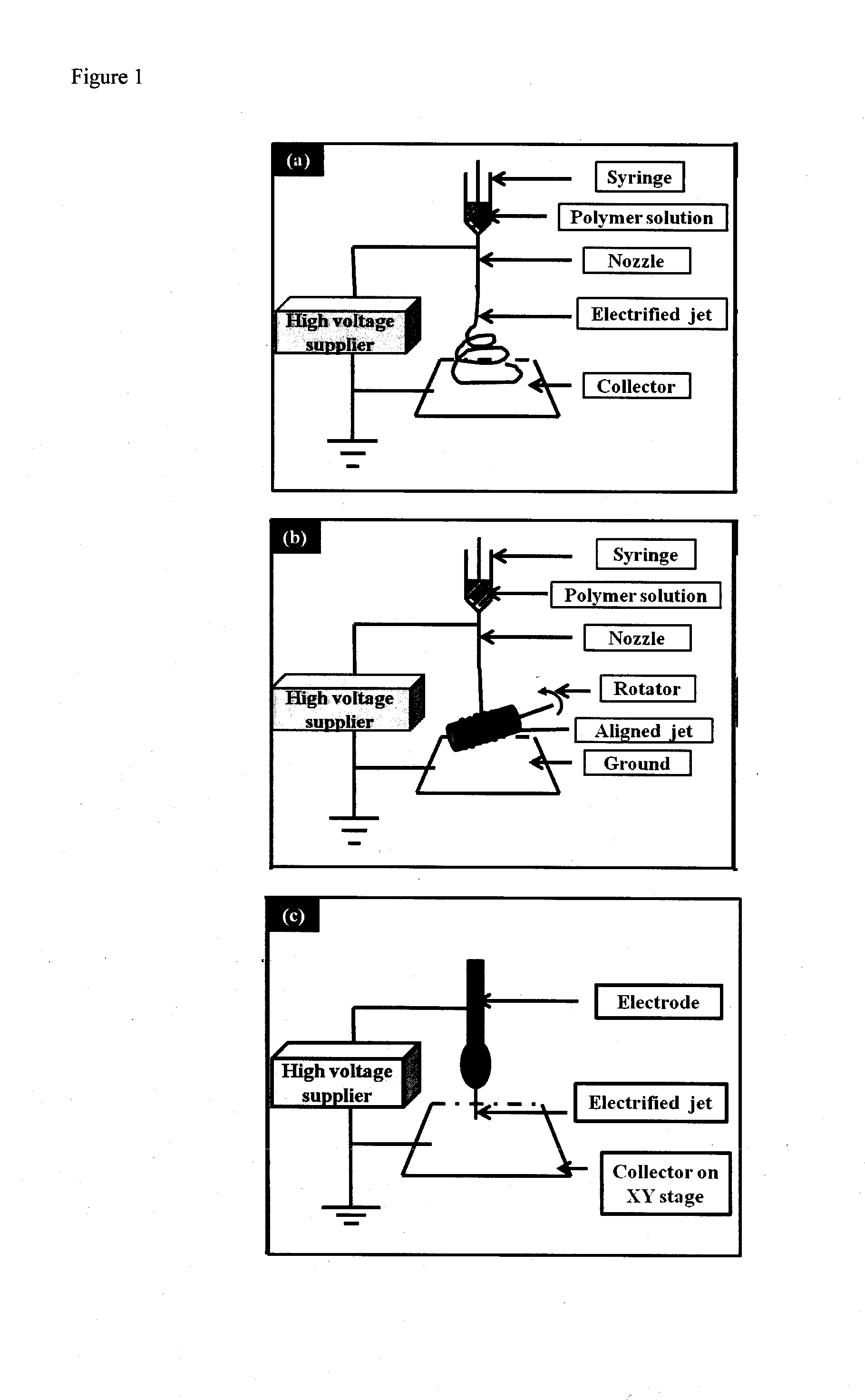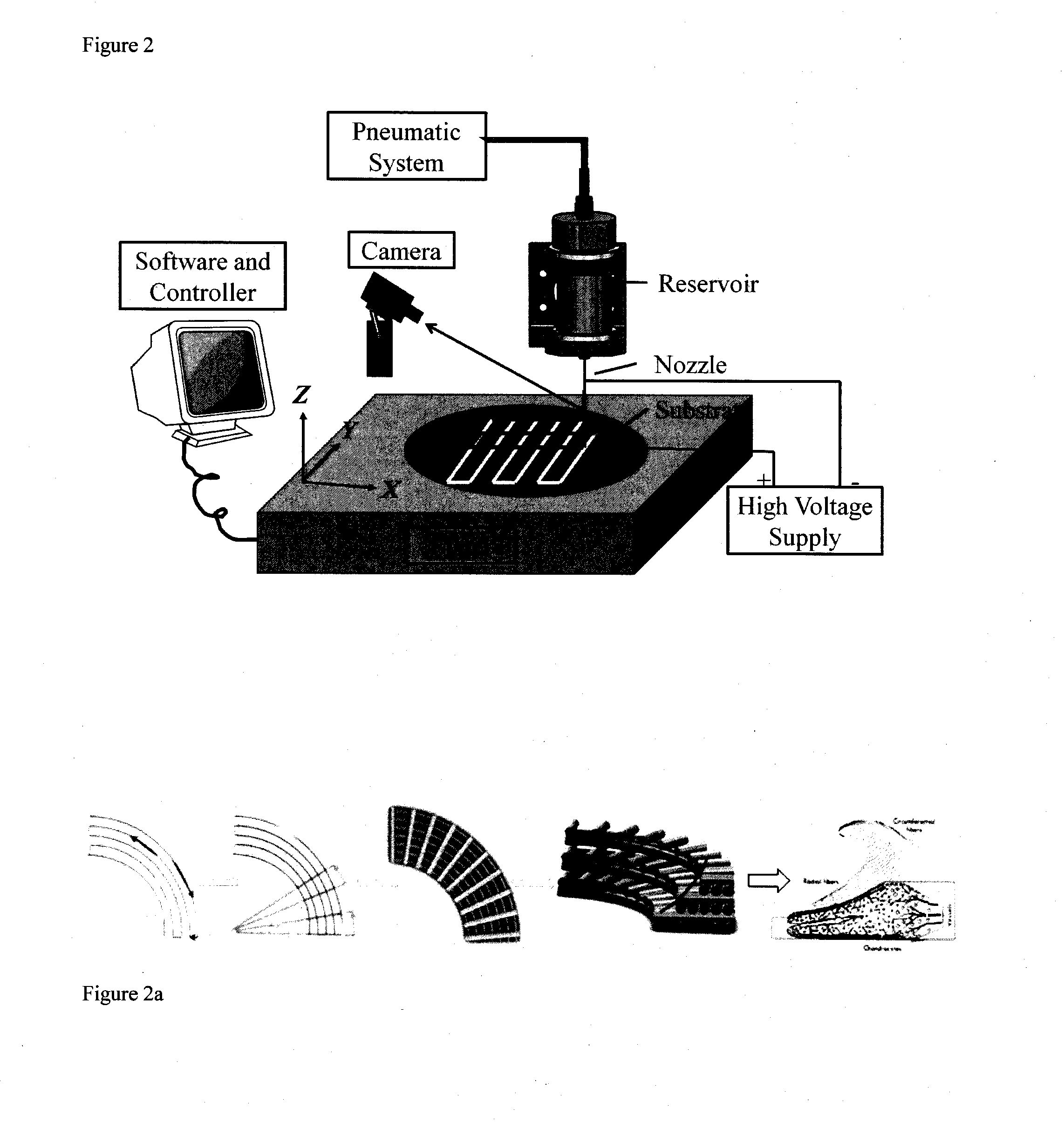3-dimensional bioscaffolds
a bioscaffold and 3-dimensional technology, applied in the field of 3-dimensional bioscaffolds, can solve the problems of long and often incomplete healing process, damage to the meniscus, and athletes, especially those who play contact sports, and achieve the effect of decreasing the number of circumferential fibres for each layer progressively
- Summary
- Abstract
- Description
- Claims
- Application Information
AI Technical Summary
Benefits of technology
Problems solved by technology
Method used
Image
Examples
example 2
Characterization of Bioscaffolds
[0088]SEM examination of the E-jetted PCL filament is shown in FIG. 5a. Parallel filaments were obtained, and the surface of the printed filaments was generally smooth. With the attribution of high voltage, uniform filaments of diameter 20.5±1.9 μm were achieved. It was comparatively smaller than those fabricated using a micro-extrusion system having a filament diameter of 100 μm (Kalita et al. 2003, Wei et al. 2012). Fine filaments have shown to enhance cell attachment and modulate cell signalling pathways, thereby accelerating extracellular matrix production (Nur-E-Kamal et al. 2005, Li et al. 2006).
[0089]As reported in the literature, the pore sizes of electrospun bioscaffolds were relatively small as compared to the size of cells, thus limiting cell penetration into the bioscaffolds (Kidoaki et al. 2005). To evaluate this, a 10-layered bioscaffold was fabricated in this study (FIG. 5b). The pore size obtained was 450±50 μm. The large pore sizes wo...
example 3
In-Vitro Study of Chondrocytes Responses on Bioscaffolds
[0092]After culturing for 3 days, the viability of chondrocytes on the fibrous bioscaffolds was evaluated using live / dead staining. It was observed that there were numerous live chondrocytes (highlighted parts of the image) attaching and spreading on the surfaces of collagen-coated PCL filaments, showing good viability of cells (FIG. 7a). In addition, chondrocytes were seen adhering on the inner surfaces of the bioscaffold, demonstrating good cell infiltration. Some cells were well-focused in plane whilst others were out of focused, implying that these cells were attaching in different layers of the bioscaffold.
[0093]FIG. 7b shows the sGAG production on cell-laden bioscaffolds and control. The amount of sGAG content on each sample increased with culturing time. However, sGAG produced by chondrocytes on bioscaffolds was significantly higher than that of the control at all time points. Results revealed a two-fold increase in sGAG...
PUM
| Property | Measurement | Unit |
|---|---|---|
| pressure | aaaaa | aaaaa |
| internal diameter | aaaaa | aaaaa |
| thickness | aaaaa | aaaaa |
Abstract
Description
Claims
Application Information
 Login to View More
Login to View More - R&D
- Intellectual Property
- Life Sciences
- Materials
- Tech Scout
- Unparalleled Data Quality
- Higher Quality Content
- 60% Fewer Hallucinations
Browse by: Latest US Patents, China's latest patents, Technical Efficacy Thesaurus, Application Domain, Technology Topic, Popular Technical Reports.
© 2025 PatSnap. All rights reserved.Legal|Privacy policy|Modern Slavery Act Transparency Statement|Sitemap|About US| Contact US: help@patsnap.com



